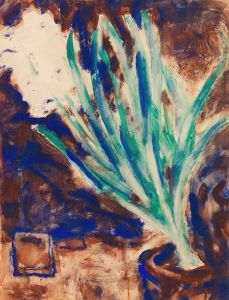
Yellow Tulips
A hand-painted replica of Frederick Carl Frieseke’s masterpiece Yellow Tulips, meticulously crafted by professional artists to capture the true essence of the original. Each piece is created with museum-quality canvas and rare mineral pigments, carefully painted by experienced artists with delicate brushstrokes and rich, layered colors to perfectly recreate the texture of the original artwork. Unlike machine-printed reproductions, this hand-painted version brings the painting to life, infused with the artist’s emotions and skill in every stroke. Whether for personal collection or home decoration, it instantly elevates the artistic atmosphere of any space.
Frederick Carl Frieseke was an American Impressionist painter, known for his vibrant use of color and light, often depicting scenes of women in intimate, domestic settings or lush gardens. One of his notable works is "Yellow Tulips," which exemplifies his style and thematic focus.
"Yellow Tulips" is a painting that captures the essence of Frieseke's artistic vision during the early 20th century. While specific details about the creation date of "Yellow Tulips" are not widely documented, it is consistent with Frieseke's body of work from the period when he was active in Giverny, France. Giverny was home to a colony of American artists and was famously associated with Claude Monet, whose influence is evident in Frieseke's work.
The painting features a woman, a common subject in Frieseke's oeuvre, surrounded by the titular yellow tulips. Frieseke's use of color is particularly noteworthy; the vibrant yellows of the tulips contrast with the softer tones of the woman's attire and the surrounding environment. This interplay of colors is a hallmark of Frieseke's Impressionist style, where light and color are used to evoke mood and atmosphere rather than to provide a detailed, realistic depiction.
Frieseke's technique often involved loose brushwork and a focus on the effects of natural light, which can be seen in "Yellow Tulips." The way light interacts with the flowers and the figure in the painting creates a sense of warmth and tranquility, inviting viewers to appreciate the beauty of a fleeting moment. This approach aligns with the broader goals of the Impressionist movement, which sought to capture the immediate impression of a scene rather than its precise details.
The subject matter of "Yellow Tulips" reflects Frieseke's interest in the private, serene moments of women's lives, a theme he explored throughout his career. His paintings often depicted women engaged in leisurely activities, such as reading, resting, or simply enjoying the garden. This focus on domestic and garden scenes was partly influenced by his surroundings in Giverny, where the natural beauty of the landscape provided endless inspiration.
Frieseke's work, including "Yellow Tulips," contributed to the development of American Impressionism, distinguishing it from its French counterpart by incorporating elements of American culture and sensibilities. His paintings were well-received both in Europe and the United States, earning him recognition and numerous awards during his lifetime.
Today, "Yellow Tulips" and other works by Frederick Carl Frieseke can be found in various art museums and private collections, where they continue to be appreciated for their beauty and the unique perspective they offer on early 20th-century life. Frieseke's legacy as a key figure in American Impressionism remains influential, and his paintings are celebrated for their ability to capture the delicate interplay of light, color, and human emotion.





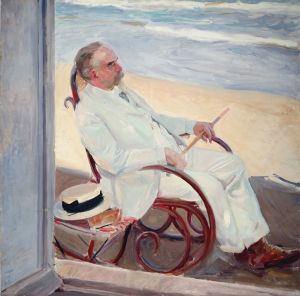

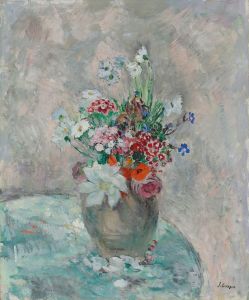
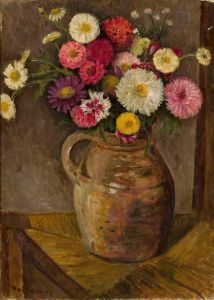
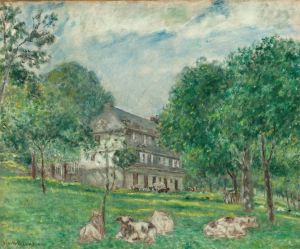
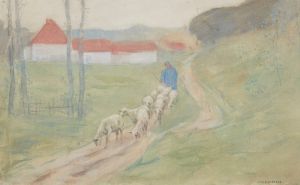


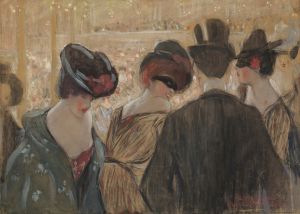

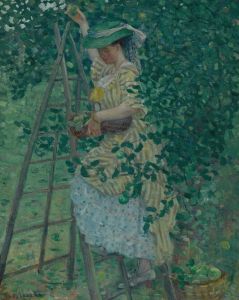
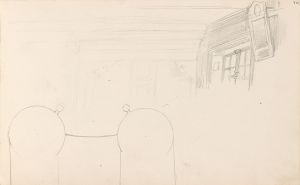
![[Interior design drawings for unidentified rooms.] [Sketch for hallway colored green and purple](/imgs/249268/s/winold-reiss-interior-design-drawings-for-unidentified-rooms-sketch-for-hallway-colored-green-and-purple-4dbe0353.jpg)
